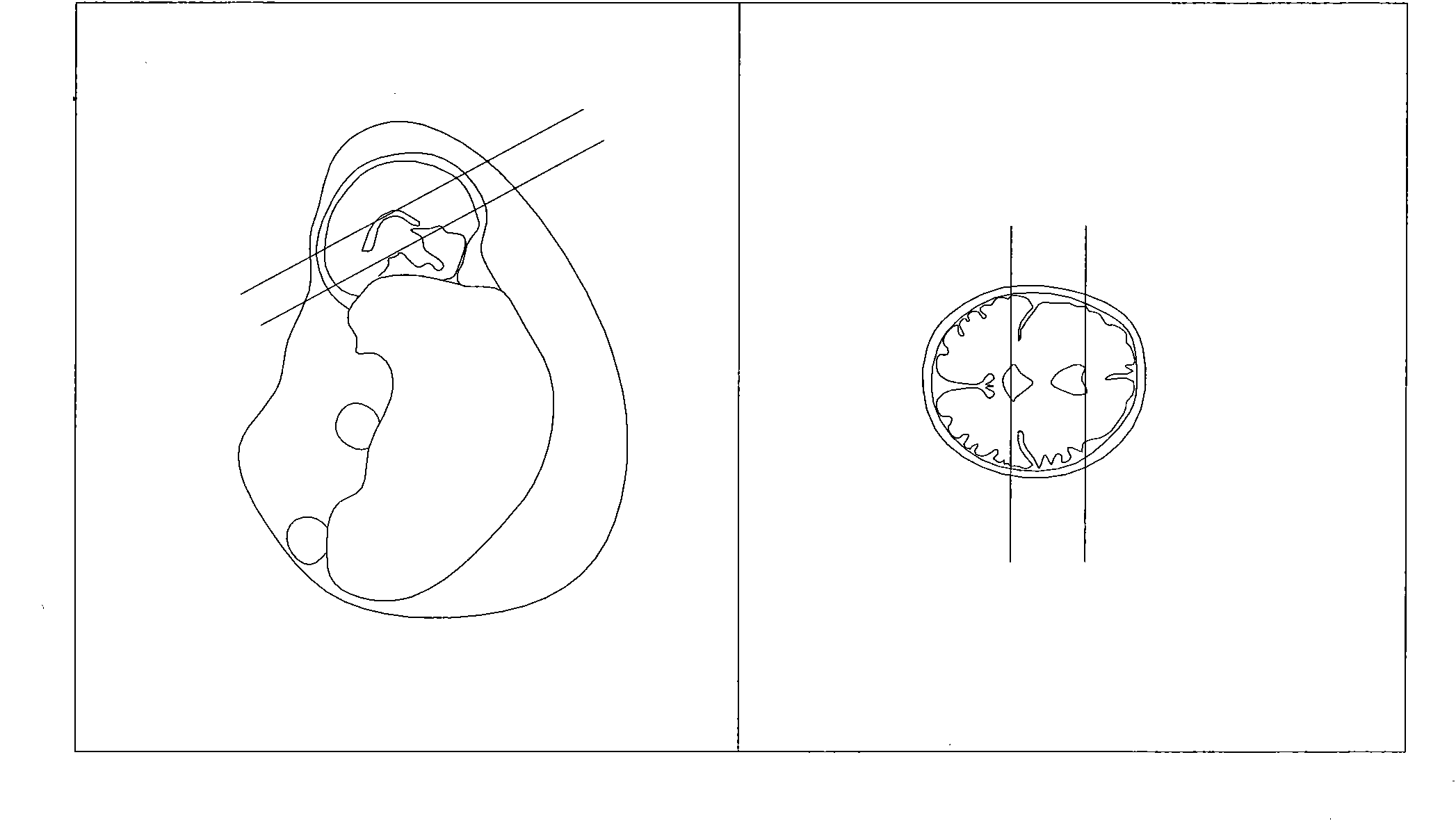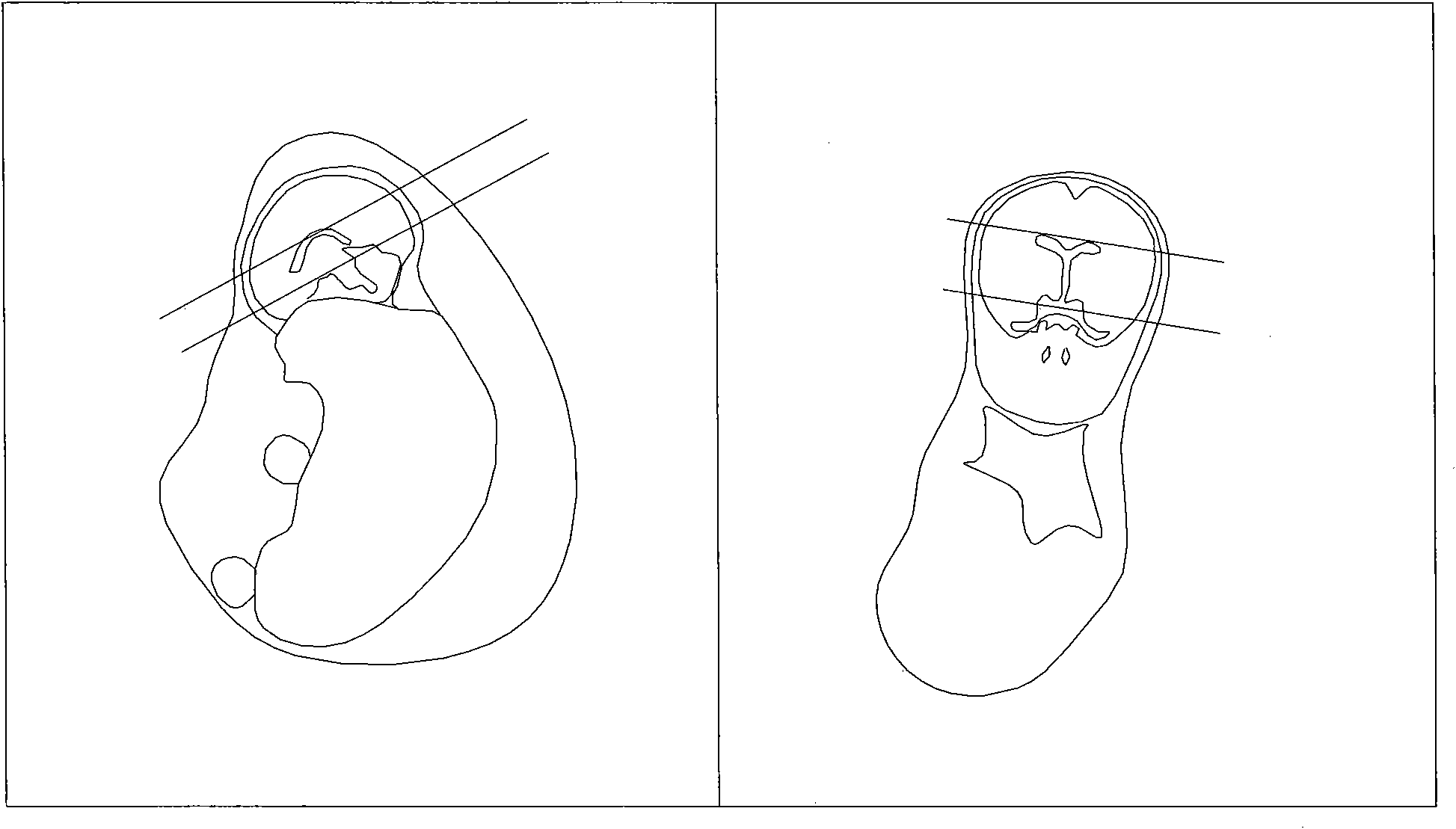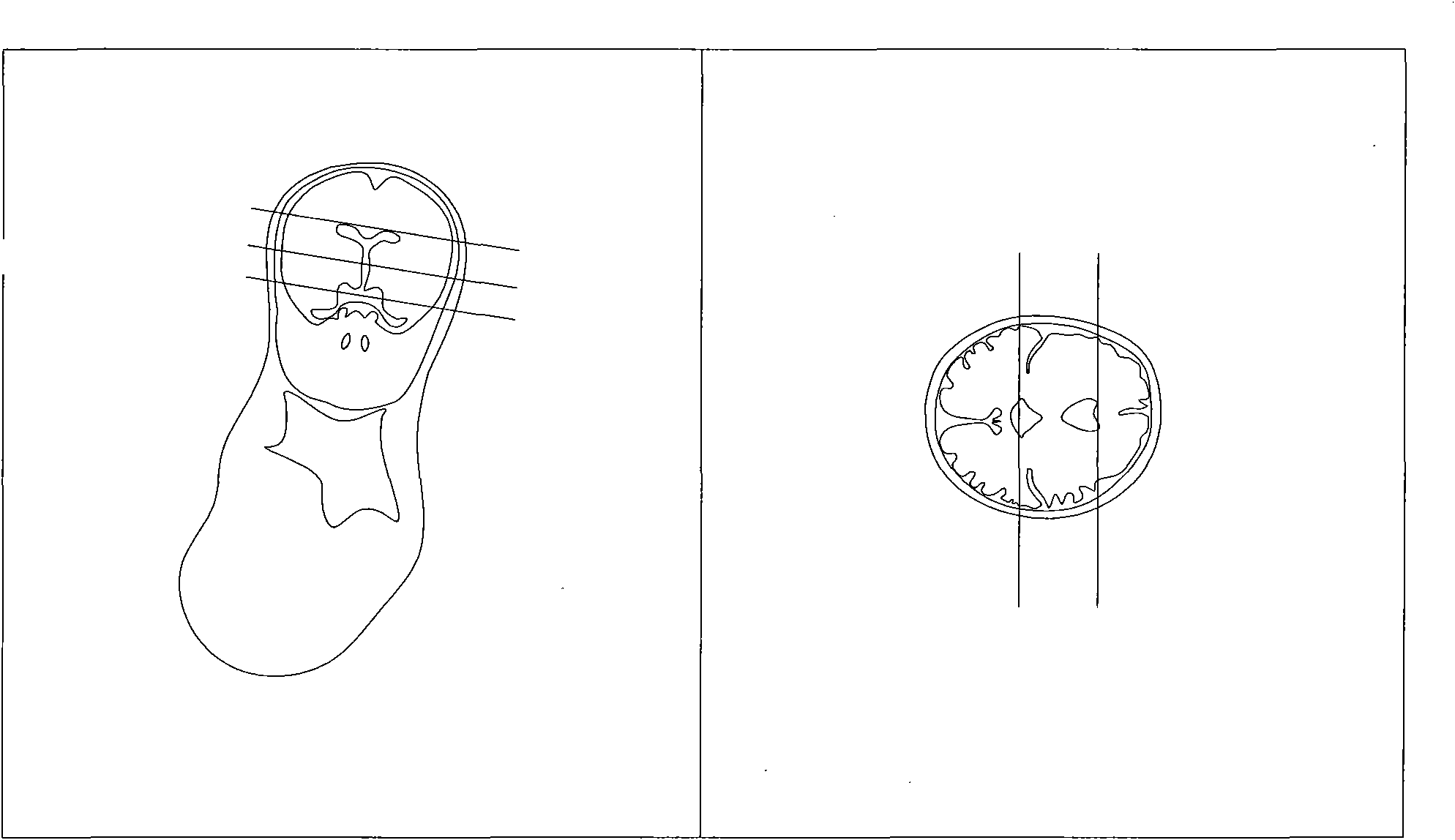Method for positioning three axial positions of fetal brain through nuclear magnetic resonance
A magnetic resonance and fetal technology, applied in the field of medical image processing and positioning, can solve problems such as difficulty in scanning and positioning
- Summary
- Abstract
- Description
- Claims
- Application Information
AI Technical Summary
Problems solved by technology
Method used
Image
Examples
Embodiment Construction
[0023] The first step is to locate the coronal and sagittal positions of the mother's uterus on the locallzer positioning image;
[0024] The second step is to obtain the preliminary body position image of the fetus from the image of the first step; due to reasons such as positioning lines and fetal positions, the positioning image of the second step shows that the shape and position of the fetal head are different, that is, the following two types may occur: Condition:
[0025] In the first case, when there is a standard fetal triaxial position, the midline of the fetal skull, the line connecting the lower edge of the genu of the corpus callosum and the lower edge of the splenium, and the line connecting the bottom of the bilateral temporal lobes can be observed, such as figure 1 As shown, if the fetal sagittal and axial positions appear during the scan, the standard coronal position of the fetus should be positioned first, which is parallel to the brainstem in the sagittal ...
PUM
 Login to View More
Login to View More Abstract
Description
Claims
Application Information
 Login to View More
Login to View More - R&D
- Intellectual Property
- Life Sciences
- Materials
- Tech Scout
- Unparalleled Data Quality
- Higher Quality Content
- 60% Fewer Hallucinations
Browse by: Latest US Patents, China's latest patents, Technical Efficacy Thesaurus, Application Domain, Technology Topic, Popular Technical Reports.
© 2025 PatSnap. All rights reserved.Legal|Privacy policy|Modern Slavery Act Transparency Statement|Sitemap|About US| Contact US: help@patsnap.com



